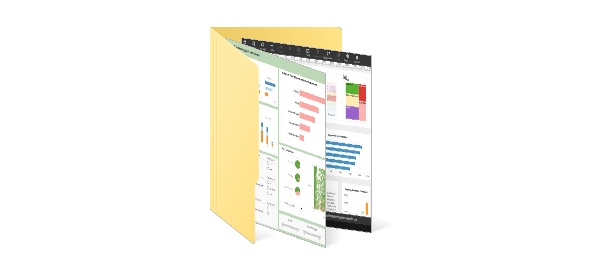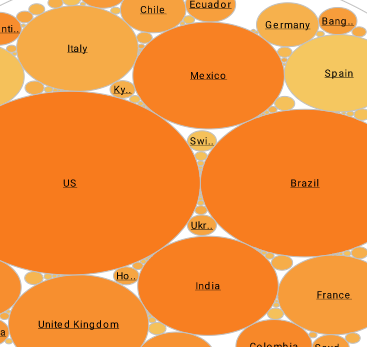What KPIs and Analytics Does a Project Operations Analyst Use?
The use of data-driven decision-making is important for effective project management. Through the use of different analytics tools and the monitoring of key performance indicators (KPIs), project operations analysts play a critical role in ensuring that projects function successfully.
This article examines the top KPIs and analytics that project operations analysts use to boost productivity and provide effective results.
| #1 Ranking: Read how InetSoft was rated #1 for user adoption in G2's user survey-based index | Read More |
Project Timelines and Deadlines
The success of a project depends on meeting deadlines and completing milestones on time. Analysts that specialize in project operations monitor deadlines to make sure that activities are being completed as expected and to spot any possible bottlenecks.
Resource Utilization
Finding areas of resource waste or scarcity is made easier by analyzing resource allocation and use. Project operations analysts can maximize resource allocation with the help of this KPI.
Budgetary Performance
To prevent cost overruns, it is important to track project spending against the allocated budget. Analysts may make wise choices to manage expenditure and preserve financial health by monitoring this KPI.
Earned Value (EV)
The performance indicator known as "Earned Value" gauges how well a project is doing in terms of budget and time. It aids analysts in predicting project completion and identifying any departures from the intended course.
 |
View the gallery of examples of dashboards and visualizations. |
Return on Investment (ROI)
ROI is a important KPI to evaluate a project's profitability. ROI analytics are used by project operations analysts to compare the project's benefits to the resources used to fund it.
Cost Performance Index (CPI)
The cost-effectiveness of completed projects is measured by CPI. It aids in identifying cost overruns or savings and directs appropriate remedial measures.
Schedule Performance Index (SPI)
The project's timetable effectiveness is assessed by SPI. This KPI is used by analysts to check if the project is on time to complete its planned milestones.
Defect Density
The number of faults found for each unit of work is known as defect density. This KPI helps determine the quality of the project and focuses attention on areas that need improvement.
Customer Satisfaction
For a project to be successfully completed, stakeholders' and clients' happiness is essential. Customer satisfaction levels are measured by analysts using surveys and feedback analytics.
Risk Management Metrics
Risk-related KPIs including risk exposure, risk impact, and risk response effectiveness are evaluated by project operations analysts. Planning for emergencies and proactive risk minimization are both aided by this.
Change Management Metrics
Analysts monitor data pertaining to change requests, implementation success, and the effect of changes on project scope and schedule since change is unavoidable in projects.
Issue Resolution Metrics
Analyzing issue resolution timeframes and success rates provide information about how well problem-solving techniques perform during the course of a project.
 |
View the gallery of examples of dashboards and visualizations. |
Resource Performance Metrics
Metrics for measuring individual and team performance assist find resources that perform well and areas that need skill improvement or further support.
Stakeholder Engagement
Engagement of stakeholders is essential for a project's success. To promote efficient communication and cooperation, analysts assess stakeholder engagement and satisfaction.
Lessons Learned
Continuous improvement depends on reviewing previous work and recognizing lessons learnt. These data are used by project operations analysts to improve next initiatives.
Burn Rate
The burn rate gauges how quickly a project uses up its allocated funds over time. This KPI is used by project operations analysts to track expenditures and make sure the project is moving forward within the allotted budget.
 |
Learn about the top 10 features of embedded business intelligence. |
Cycle Time
Cycle time is the amount of time needed to finish a certain project job or activity. Analysts may find areas for improvement to boost project efficiency by looking at cycle durations.
Resource Forecasting
For effective project planning, predicting future resource requirements is important. Analytics are used by project operations analysts to forecast resource needs based on past performance and project estimates.
Productivity and Efficiency
Metrics for productivity and efficiency aid in evaluating the effectiveness of the project team. Analysts might find chances to reorganize workflows and boost efficiency by monitoring these KPIs.
Agile Metrics
Analysts monitor data for projects using Agile approaches, including velocity, burndown diagrams, and sprint success rates. These indicators provide perceptions into the effectiveness of the team and support the improvement of Agile procedures.
Customer Retention and Churn
Customer retention and churn rates are essential KPIs for initiatives involving goods or services that are intended for consumers. These measurements are used by analysts to evaluate consumer loyalty and pinpoint opportunities for development.
Compliance and Regulatory Metrics
Project operations analysts keep an eye on KPIs relating to regulatory adherence and compliance levels in sectors with stringent compliance standards to make sure the project complies with all essential criteria.
Employee Satisfaction and Turnover
Project results are influenced by team member satisfaction and turnover rates. Analyzing these indicators aids attempts to keep a motivated and dedicated staff by identifying possible problems.
Requirements Traceability
Requirements traceability makes ensuring that every project need is taken into consideration and met on schedule. This KPI is used by analysts to monitor needs throughout the course of a project.
 |
Click to read InetSoft's client reviews and comments to learn why they chose InetSoft. |
Impact Analysis
Impact analysis aids in evaluating the possible outcomes of project scope or schedule modifications. Project operations analysts may decide on modification requests and their effects by doing impact analysis.
Schedule Variance (SV)
Schedule Variance calculates the discrepancy between the project's actual progress and its projected progress. A project is said to be ahead of schedule if the SV is positive, and behind schedule if the SV is negative. Analysts for project operations utilize SV to spot timetable deviations and implement remedies to keep the project on pace.
Resource Capacity Planning
Planning for resource capacity entails assessing the resources' readiness and capacity to satisfy project needs. These data are used by project operations analysts to ensure that resources are neither overextended or underused, resulting in the best possible resource allocation.
Project Health Index (PHI)
A composite KPI called the Project Health Index combines many performance measures to provide a comprehensive evaluation of the project's health. PHI is used by analysts to get a comprehensive understanding of the project's performance and pinpoint areas that might require improvement.

